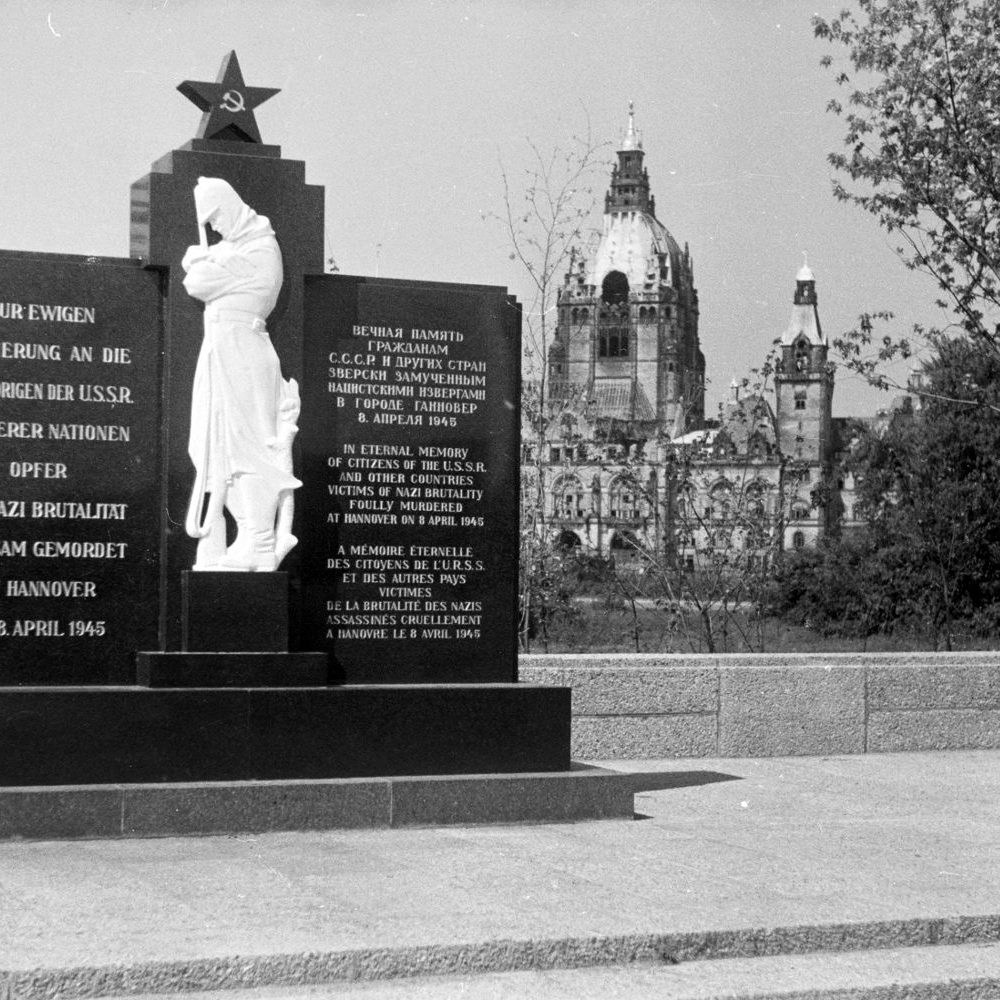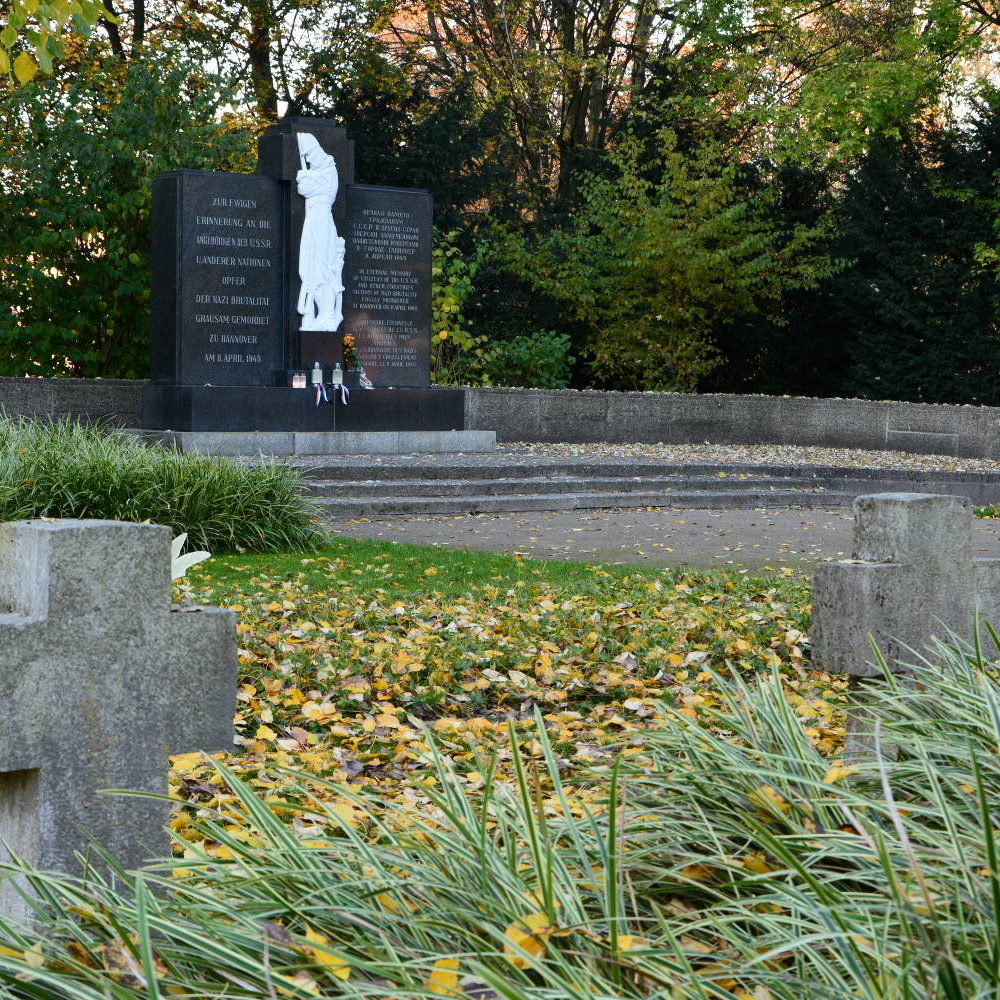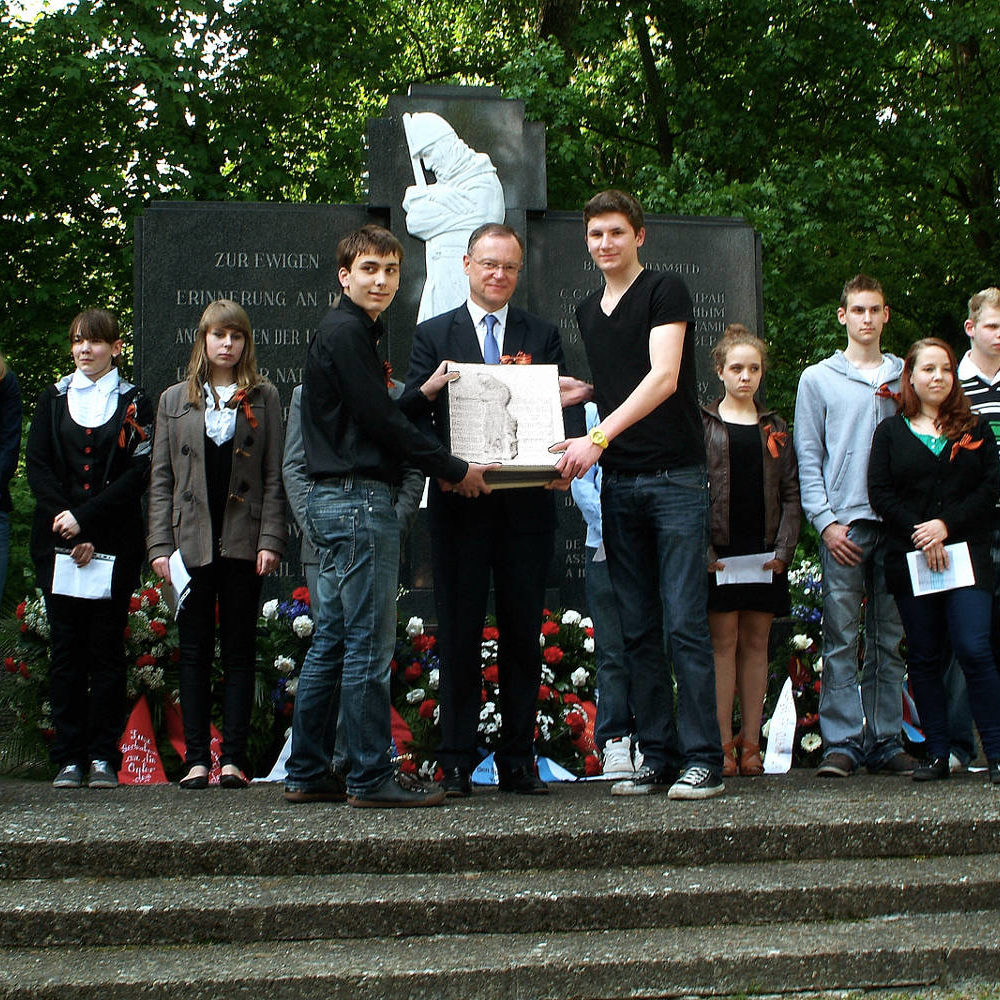Graves of victims from all over Europe: this cemetery is the resting place of 386 concentration camp prisoners, forced labourers and prisoners of war from many European countries. The victims include 154 from the former Soviet Union who were murdered in a mass shooting that took place at Seelhorst city cemetery on 6 April 1945 – four days before the liberation of Hanover.
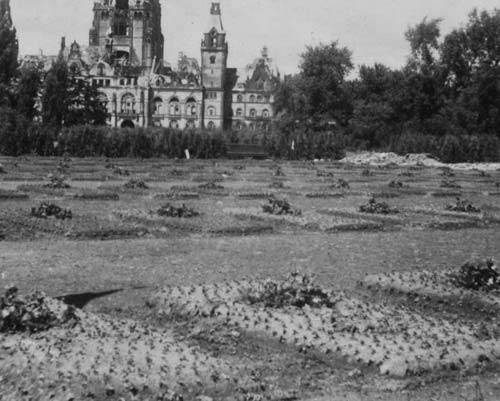
Forced labour
Since the beginning of the war, civilians and prisoners of war from all the occupied countries have been used in Germany for forced labour. Their numbers increase even further during the “Total War” after the defeat at Stalingrad in February 1943 and in the face of dramatic labour shortages on the “home front”. In Hanover, as many as 60,000 foreigners, both men and women, are forced to work and hundreds of hut camps are dotted throughout the city. For example, shortly before the end of the war forced labourers account for around 30 per cent of the total workforce at the Hanomag armaments manufacturer in Linden.
Categorised by “race”
Foreigners are classified according to racial criteria. The Gestapo [the abbreviation of Geheime Staatspolizei, the Secret State Police] issue pamphlets giving precise instructions on how to treat those of “alien ethnicity”. Those belonging to “Germanic peoples”, such as the Dutch or Norwegians, enjoy greater freedoms, better medical care and larger food rations than Slavs. Czechs and Serbs are classed above Poles, who in turn rank above the so-called “East European workers” from the USSR.
Gestapo prison in Ahlem
After being bombed out in Südstadt in October 1943, a Gestapo regional office located in buildings of the former Jewish horticultural school in Ahlem is responsible for the surveillance and punishment of foreign forced labourers. In mid-1944, a separate prison for up to 1000 detainees is set up, directly adjacent to the offices of the public officials and staff. In March 1945, a few steps away, over 50 men and women die on the gallows of an execution site. Before the arrival of American troops, the prisoners of the Gestapo’s ‘Work and Education Camp’ [“Arbeitserziehungslager” abbreviated to AEL] in Lahde near Minden are herded to Ahlem.
One sole survivor
Before fleeing Hanover in April 1945, Gestapo officials condemn 155 Soviet forced labourers to death, coercing them to dig their own mass grave in Seelhorst cemetery. Among them is a young woman. Peter Palników, a captured Red Army captain, is the only one who succeeds in escaping the shots of the Gestapo Kommando unit. Later, he relates the crime before an Allied investigating tribunal: “One of the guards approached the girl and fired a shot at her. He fired for the second time but the girl still remained standing. After the third shot was fired, the girl fell to the ground.” At that moment Palników manages to make his escape.
Funeral cortège through Hanover
It is also this former captain who, after the liberation of Hanover, alerted the attention of the Allied military authorities to the site of the killings. The British and Americans arrange for these bodies to be laid to rest at a newly built Cemetery of Honour on the north bank of the Maschsee. The bodies of a further 232 forced labourers and concentration camp inmates from mass graves at Seelhorst Cemetery are also interred there. High-ranking members of the former NSDAP [Nazi Party] are forced to exhume the bodies and Hanover’s residents are ordered to follow the bodies, which are covered in white sheets on trucks, in slow procession along Hildesheimer Strasse.
Vandalism in the Cold War
Its central location behind the New Town Hall is intended to keep the massacre in the public consciousness. Nevertheless, for decades the “Russian Cemetery”, as it was soon derogatorily referred to, has a shadowy existence. During the Cold War the memorial by the Ukrainian sculptor Mykola Muchin is repeatedly vandalised. In 1947 the head of the bas-relief was knocked off, in the early 1950s the Soviet star was removed under mysterious circumstances, explosive attacks were carried out in 1979 and 1987, and in 1980 the memorial was daubed with paint.
Coming together to commemorate
In 1979, the metalworkers’ union IG Metall takes on sponsorship of the cemetery. The Maschsee-Nordufer cemetery working group has been working together on this site since 2006. It is involved in school projects and sponsorships, the planning of memorial days as well as the organisation of an international youth meeting. The main event for Anti-War Day takes place here annually on 1 September.
A memorial plaque at the Cemetery of Honour commemorates in text and illustrations the site’s historical significance. A memorial plaque at the Cemetery of Honour was created as part of a school project at Heinrich-Heine School, Hanover, in cooperation with: Volkswagen Coaching GmbH, Hanover, IG Metall Hanover, “Hannoversche Lager” [Camps in Hanover] project, City of Hanover, Volga Int., Finatep AG and Volksbund Deutsche Kriegsgräberfürsorge e.V. [German War Graves Commission] (front) and St. Ursula-Schule-Hanover, in cooperation with: Volksbund Deutsche Kriegsgräberfürsorge e. V., der Landeshauptstadt Hannover [state capital of Hanover], Fachbereich Bildung und Qualifizierung [Department of Education and Vocational Training], Verein Gegen das Vergessen/NS-Zwangsarbeit e.V. [Association Against Oblivion/Nazi Forced Labour], Volga Int. (reverse).
Additional online information
The German War Graves Commission:
Click to download the information panel as a PDF file [in German and Russian]
Culture of Remembrance Downloadable flyer and information panel [in German]
Region Hannover Ahlem Memorial [in German]
Further reading: Click here
Texts and images Michael Pechel

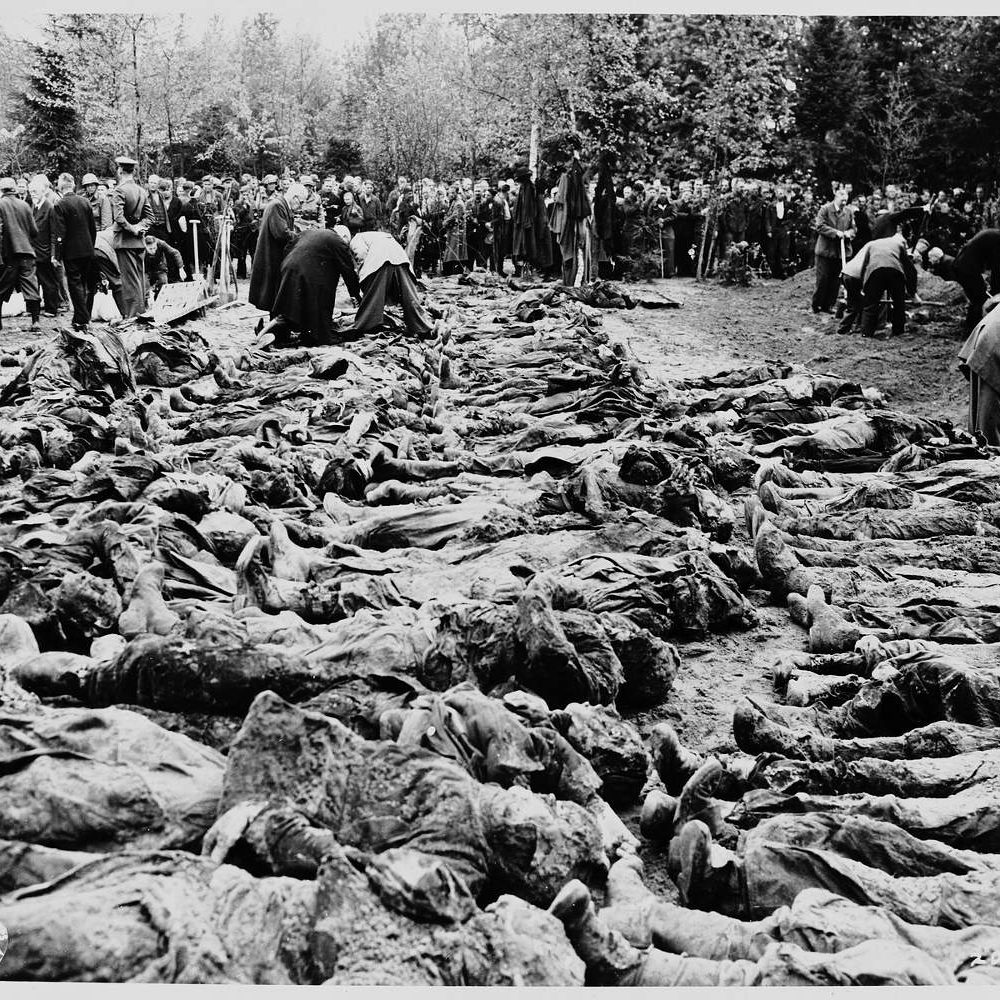
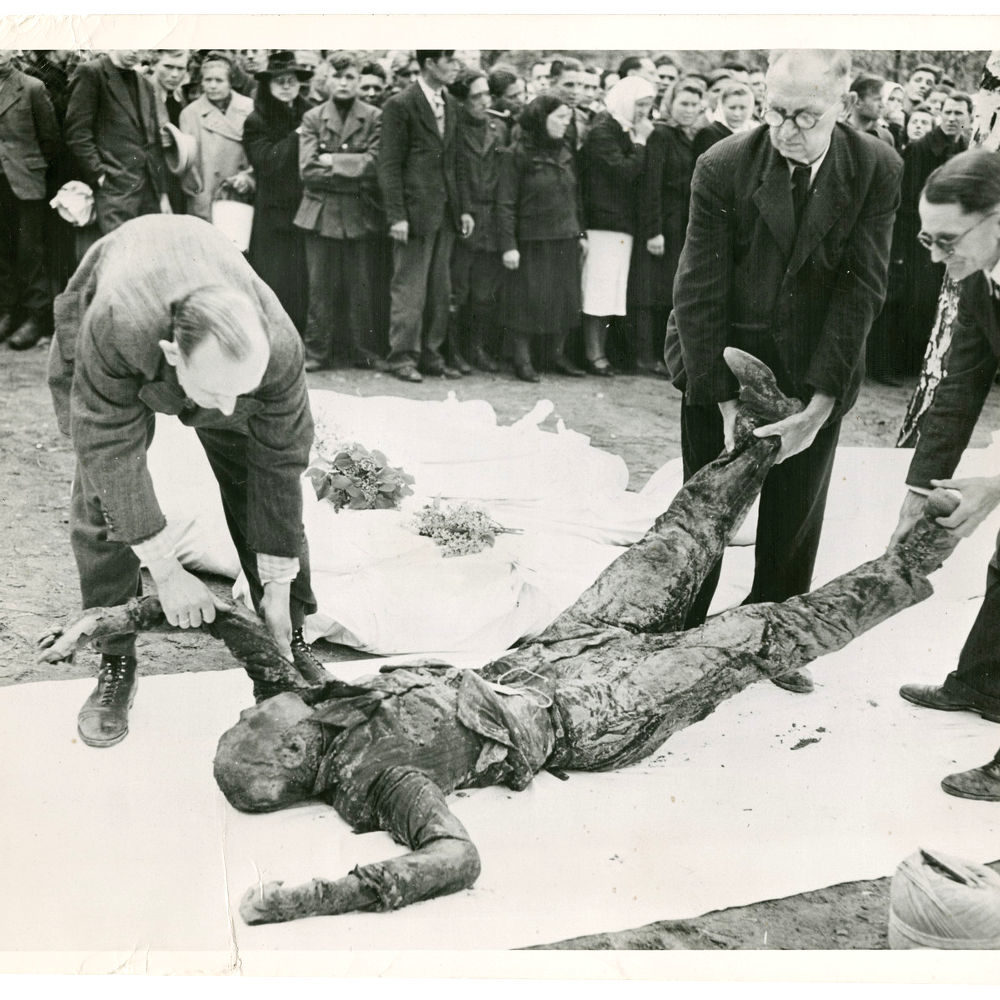
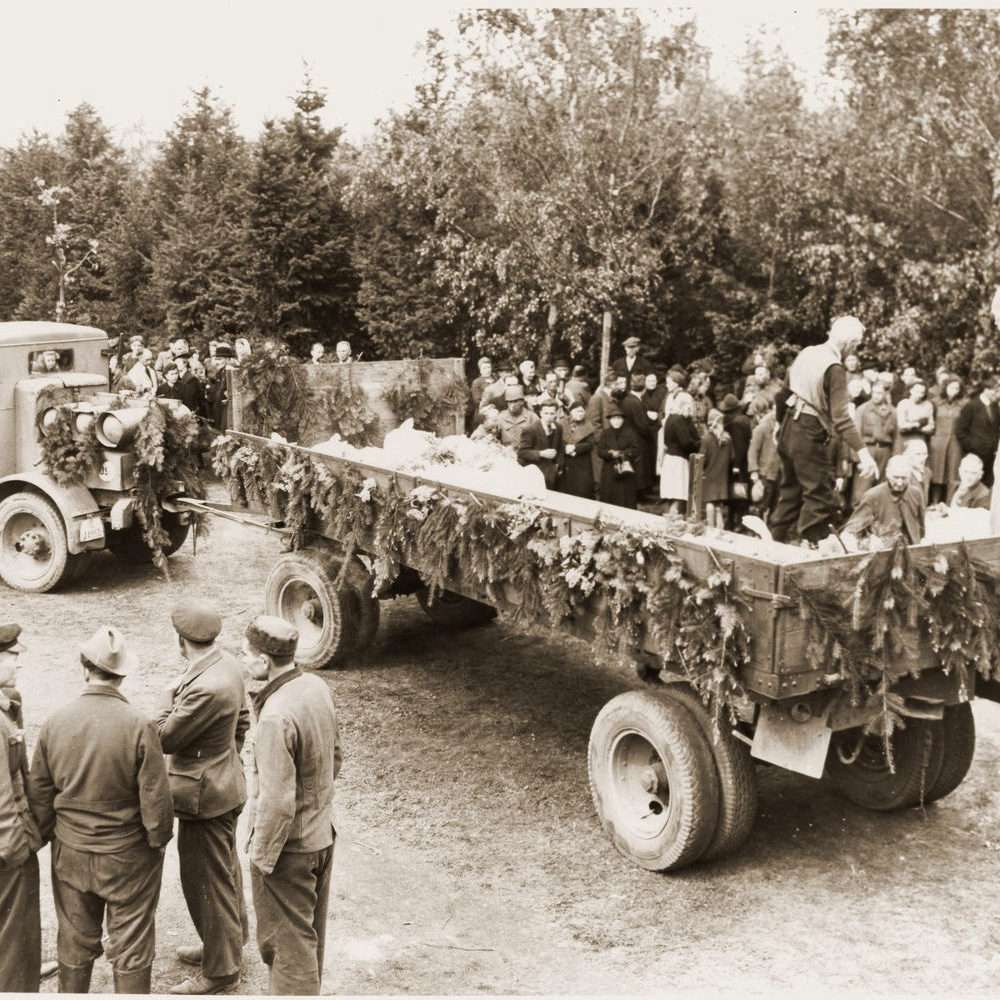
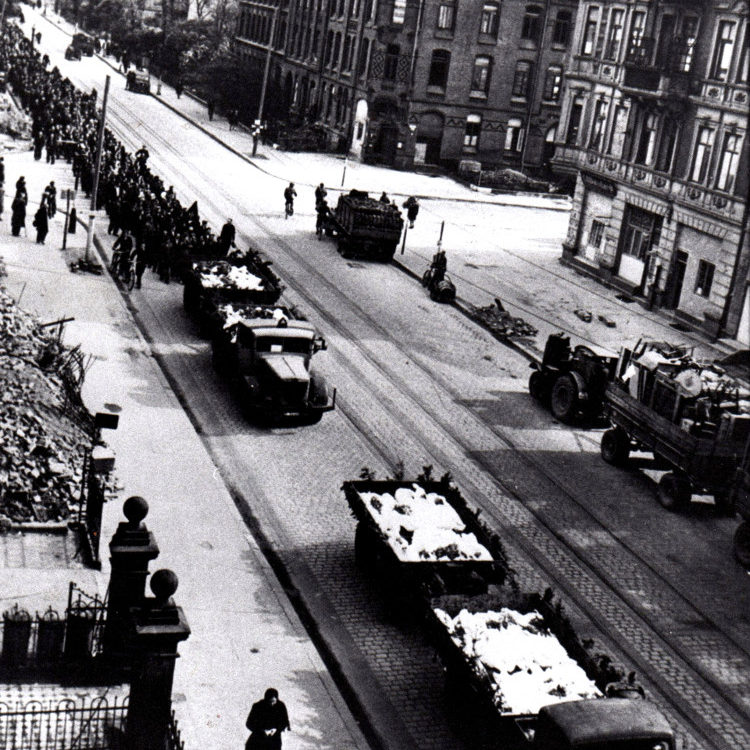
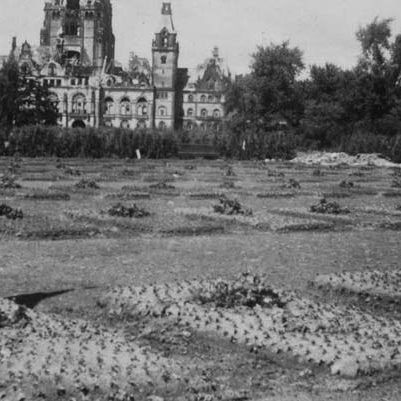
![Hanover: The Cemetery of Honour and memorial on the north bank of the Maschsee, with the New Town Hall in the background, undated. Parks Department [Grünflächenamt] Archive in the Historical Museum of Hanover](https://zukunft-heisst-erinnern.de/wp-content/uploads/2020/03/ehrenfriedhof_maschsee_1-979x979.jpg)
